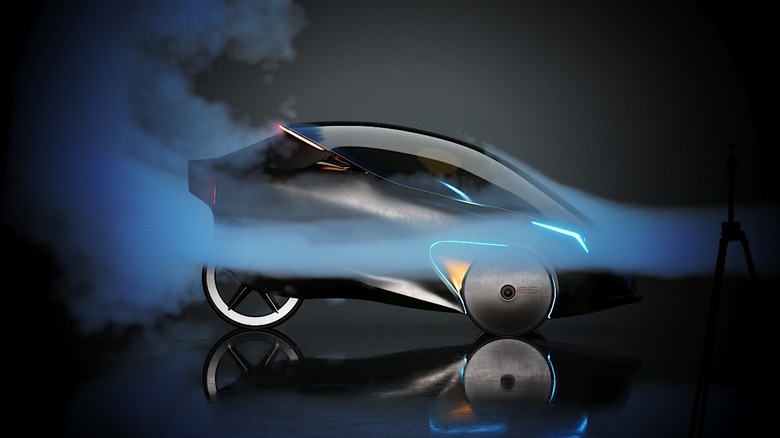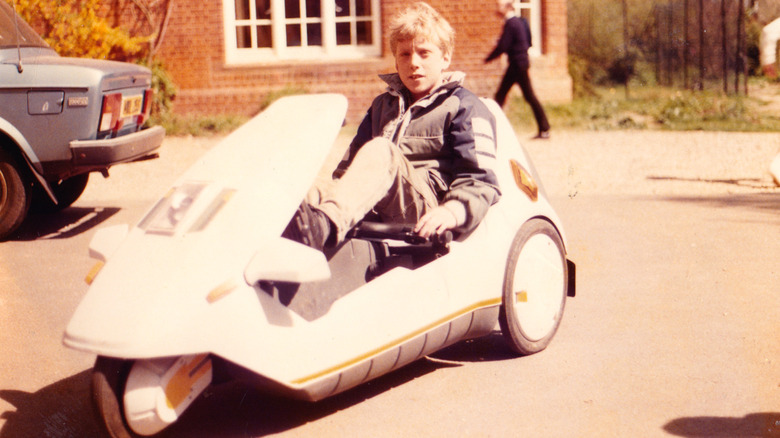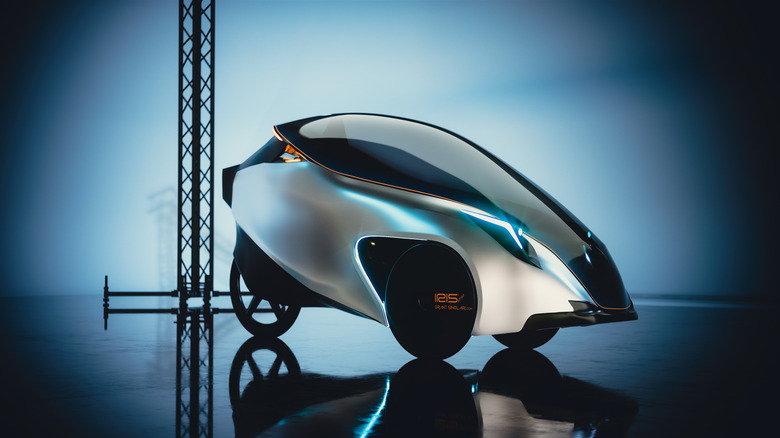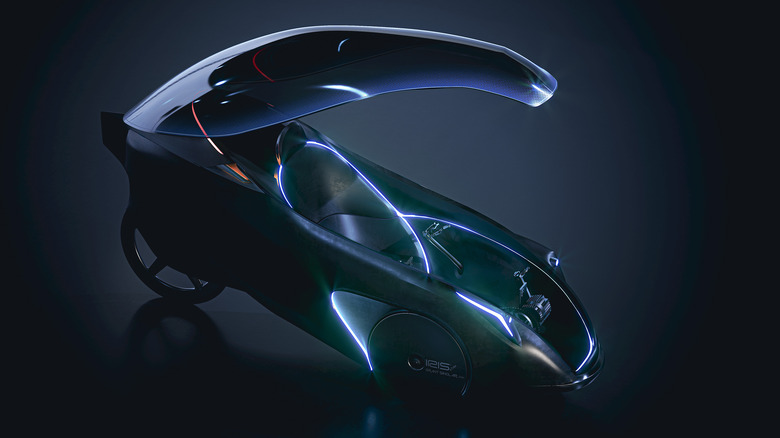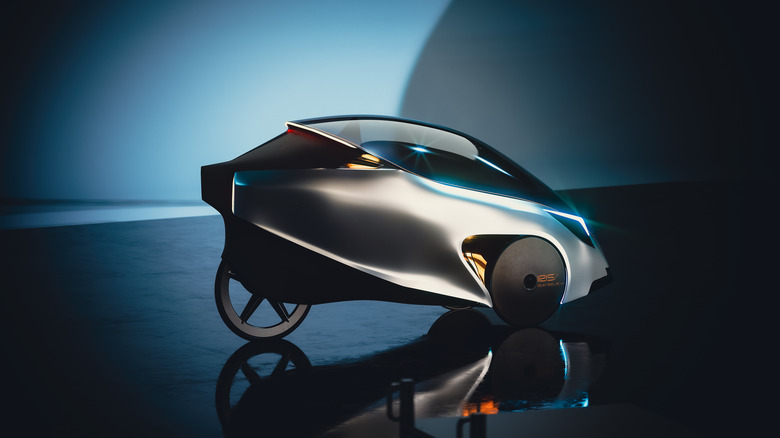What We Know About Sinclair's IRIS eTrike
We're in an age where transport is becoming somewhat revolutionized. People need to move, and ways to get from A to B are constantly being reimagined. The IRIS e-Trike is one of the more recent ones, and it promises to revolutionize how people get around cities, keep fit, and take on short-distance trips.
Recently, its inventor Grant Sinclair gave the world a better look at his upcoming marvel. The eBike has drawn comparisons to another famous electric vehicle manufacturer — having been coined "the Tesla of Bikes" at a trade show in Germany. There's even a tentative link to space, as Astronaut Tim Peake is one of the few who have test-driven an IRIS so far.
There are some high-tech features on board. The protective bubble the driver sits in is made from a special foam that is both light and impact resistant. HEPA air filters ensure the person pedaling the vehicle won't spend their time inhaling exhaust fumes. The acrylic canopy can be de-misted, so there's no worries about your breath fogging your view. And it can even hit speeds of over 30 miles per hour, which is respectable for an eBike. Other features will be familiar to those aware of the Sinclair family. The IRIS' foundation is built on one of the UK's most unique vehicles.
It's futuristic, but with strong links to the past
If you mention the name "Sinclair" to someone from Britain, their mind may immediately shift to the Sinclair C5. That was a pioneering electric bike launched by Sir Clive Sinclair — Grant's uncle — back in the 1980s. It was based on many ideas that were revolutionary at the time, but could be seen as pretty mainstream now. The eco-friendly vehicle was battery and pedal-powered, like a modern e-bike. It was designed to be lightweight and easy to handle. The concept struck a chord with the rich and famous — Elton John, Prince William, and magician Paul Daniels all had one.
Unfortunately, the C5 didn't really take off with the general public. While Sinclair wanted millions to be produced and the pioneering EV to become a rival to traditional cars and bikes, in the end, only 15,000 or so rolled off the production line. Worse yet, only 5,000 of those sold. The IRIS has a great chance of succeeding where the C5 failed. Like its predecessor, there are low barriers to entry. In the U.K. you don't need a license to ride one, you only need to be over the age of 14. They are exempt from things like road tax and to refuel, you just need to find a power outlet. There are other areas where the IRIS has taken inspiration from its predecessor and advantage of technological developments.
Tech has advanced, and the IRIS is taking advantage of that
Things have come a long way in the past 40 years, both socially and in terms of technology. The Sinclair C5 was a good idea, but unfortunately, a combination of the tech and the time and public attitudes may have held it back somewhat. There were concerns over safety, especially as the C5 would be sharing the road with cars, trucks, and vans. This should be less of an issue with the IRIS due to a combination of improvements made to the vehicle itself, and the vast network of cycle lanes that has sprung up around Britain in the last few decades. Then there were technological limits.
The C5 could hit speeds of 15 miles per hour and had a range of around 20 miles, which wasn't bad for the time. It relied on lead-acid batteries, the same kind you'll find cranking the starter motor of an ICE car. Battery technology has come a long way since then. Lithium-Ion batteries are lighter, can store more energy, and can be recharged much faster. As a result, the IRIS e-Trike has extended that range by another ten miles, and can be recharged within an hour.
Attitudes have also changed in that time, with a significant chunk of the population looking towards greener transport. Sinclair told SlashGear in an interview that the trike is "aimed primarily at the commuter who wants to get from A-B faster, safer & cleaner." Though it's possible to see a market amongst urban delivery drivers too.
Sinclair has learned lessons from the C5
The IRIS has certain advantages over other eBikes including its ancestor, and many of those come from its bodywork. As Sinclair points out, "people still seem put off cycling in poor weather." Risk, or at least perceived risk, is also an issue. Like all cyclists, people on eBikes are amongst the most vulnerable road users. This issue was exacerbated on things like the Sinclair C5, which was open-topped and positioned its rider close to the road surface. The built-in HEPA filter is also a bonus, at least while ICE cars are still on the road. Riders won't have to worry about sitting in clouds of exhaust fumes as the air within the IRIS should stay quite clear.
Unlike its predecessor, the IRIS' rider is totally encased in a thick and durable, yet light, foam body. This design protects them from the elements, and other road users. Sinclair explains: "The EPP foam body was inspired by RC helicopter design as a small RC toy I crashed several times amazingly had no damage at all to its internal components, especially its fragile Lipo battery and motors." So IRIS riders are sheltered from the weather and have a good amount of protective material between themselves and the cars that they're sharing the road with. The rider's position has also been lifted, "so IRIS riders did not feel intimidated riding in traffic and field of vision was improved."
Cost might prove an issue
The IRIS eTrike has been described by some as the "Tesla of Bikes" and technology isn't the only area where parallels can be drawn with the EV giant. The IRIS is also pretty expensive. Its cheapest configuration is currently listed with an early bird price of £4,999.00 or $6,223.11. This is cheaper than some ultra-high-end eBikes, but is definitely on the more expensive end of the scale. As a result, there are probably a large number of people who may not be willing to part with close to £5,000 for what is a new take on a relatively new mode of transport.
Then again, you are getting a lot for your money. The shell is certainly a huge advantage, making the bike practical in all weather and likely toning down that lingering fear of a grizzly death some people get while cycling on a road. Storage is also a plus, 100 liters (3.4 cubic feet) isn't an extreme amount, but it's more than you get on most bikes and will be ideal for things like small shopping trips. And the price isn't too crazy when compared to other eBikes. We tested one a while back that retailed for $4,000+ and didn't even come with suspension.
